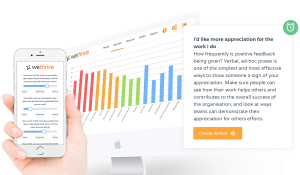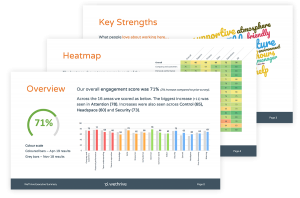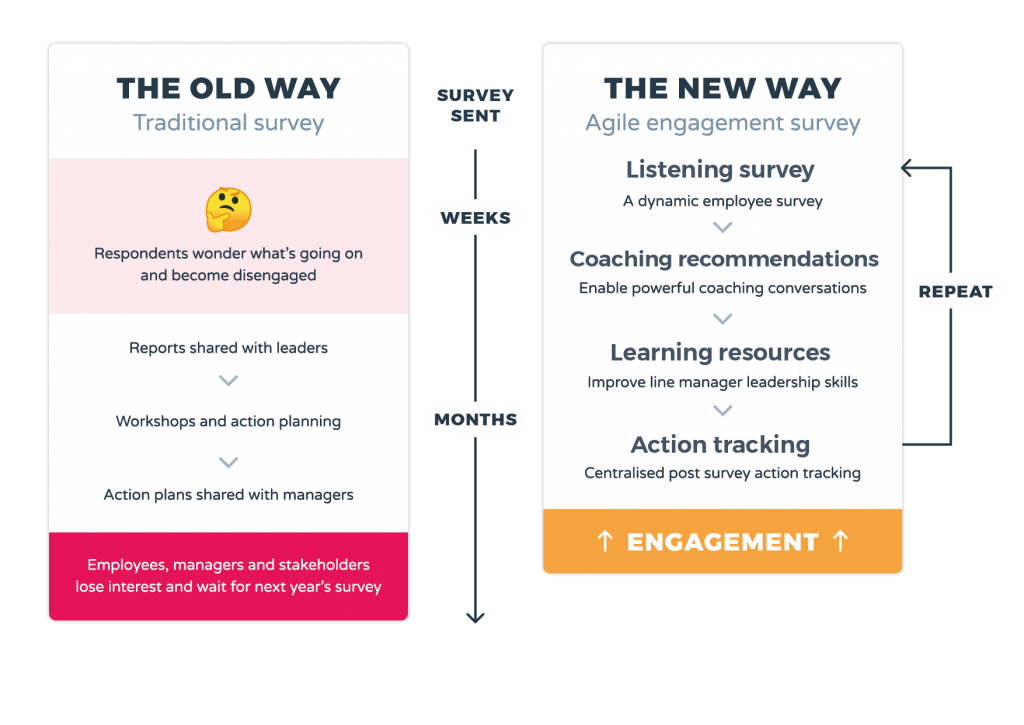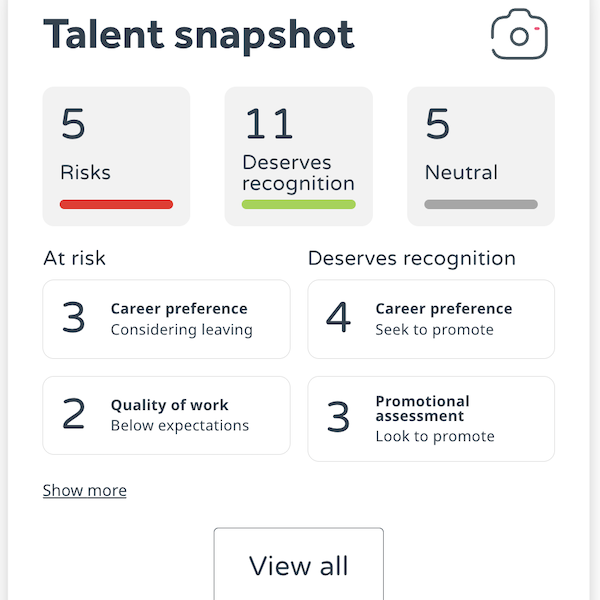Employee surveys can be extremely useful, done right – pulling people together and galvanising them into making useful changes.
Given that this is the Information Age, it’s natural enough for companies to investigate the DIY approach to surveying – if you have a staff list, a computer and a subscription to a survey template system such as Survey Monkey, you might appear to be almost there.
However, if staff experience really matters and an engaged workforce is genuinely you aim, there are several compelling reasons why it could be a bad idea to DIY your employee engagement survey.
Here’s a run-down of the top six things you might want to think about before committing to a DIY survey.
1 Who is asking the survey questions?
Before you even think about an engagement survey questionnaire, consider whether it should come from the company itself, or from an external provider.
A well-designed and implemented company survey will do its work whoever creates it, but in-house questionnaires often suffer a number of problems.
One is cynicism from the staff, some of whom may suspect that the questions will be weighted and the analysis performed so as to get the answers the board would want to see.
There are others, though – the author Rajeev Peshawaria, in his book ‘open source leadership‘, says in-house surveys ‘tend to have flaws that either prevent leaders from truly understanding morale at their companies, or from doing much to lift morale if it’s low’.
There is also the problem of trust – as the CIPD put it in their Megatrends publication ‘are organisations losing the trust of their workers‘, ‘employees who trust their senior managers are in the minority’, and even more worryingly from the point of view of the in-house survey, nearly all non-engaged employees also distrust senior management, as do the majority of employees who are dissatisfied with their job.
Using an external provider to ask the questions adds a distance and independence that your own engagement survey, created in-house, struggles to find.
2. Employee survey questionnaire design
Designing the employee engagement questionnaire content entails serious research, because it is not a trivial matter to acquire employee data that actually means something and contributes to positive change.
If you want to start from scratch and build your own survey question set, there are several things to consider in order to arrive at survey data that has some validity. It is difficult to avoid creating leading questions, or questions that are loaded, or that accidentally include more than one question, and so on.
One group of researchers, in their paper entitled, ‘good practice in the conduct and reporting of survey research‘ suggests that as a starting point you have to:
- Be knowledgeable about the area you wish to research.
- Widen the base of your experience, explore related areas, and talk to other researchers and practitioners in the field you are surveying.
- Consider using techniques for enhancing creativity.
- Avoid pitfalls such as allowing available methods to decide the questions to be asked, posing questions that cannot really be answered, or asking questions that have already been answered satisfactorily.
Most of the DIY company surveys we have seen include more than one source of bias in the question set, and it’s not hard to see why.
As the Harvard Business Review pointed out in a paper titled Getting the Truth into Workplace Surveys, you wouldn’t necessarily expect that the phrase ‘Has a strong grasp of complex problems’ would have a distinct gender bias, with male respondents scoring significantly higher than females, whereas ‘Discusses complex problems with precision and clarity’ does not.
3. Survey methodology
Employee surveys can be sent out manually or via a web-based survey system.
There are still companies using paper-based surveys, particularly in industries where a significant proportion of employees do not have company email addresses, but there is an inevitable delay in receiving and processing the responses before they can even be analysed. This compromises the usefulness of the whole exercise as one of the golden rules of survey feedback is that it staff feedback should happen as soon as possible after people have finished processing the tasks on which they have been working.
Then there are the pre-flight communications to handle, again without introducing bias, and once the survey is under way you have to manage the reminder process.
4. Employee survey analysis
Using an employee engagement template is one thing but the hard work of segmenting, reading, interpreting and building action plans from the employee survey results presents another set of considerations and challenges.
You could just do an overall analysis, as many companies used to do, and announce the survey results on the staff notice board. There would be little point, but that is what used to happen.
Nowadays companies realise that more detailed analysis is useful to better understand company culture, but who is going to do that? It is very difficult for the company’s own staff to do it well, because of the many cognitive biases that will affect the result if the analysis is done by an insider.
The most obvious of these is confirmation bias – a kind of wishful thinking makes us give more weight to things that we think are true, or would like to be true.
However, there are many other potential biases, as Bernard Choi points out in his paper, ‘a catalog of biases in questionnaires‘ a paper cataloguing the main culprits which include ambiguous, complex and double-barreled (asking two questions in one). All of these can adversely impact engagement with the employee survey and skew results.
Handing the analysis to an external provider is more likely to provide a true picture of employee experience. At WeThrive an intelligent machine does this, pulling meaning out of data without fear or favour.
5. Employee survey reports
We now know how incompletely an average picture represents each individual in the company- so you will want to produce reports for groups that are as small as possible – possibly even for individuals.
Industry folk-lore says anonymous surveys are the way to get better results, and as explored in ‘should an employee engagement survey be anonymous’, that is shown to be false in most circumstances.
Furthermore, as stated in the paper ‘Complete anonymity compromises the accuracy of self-reports‘ research shows that individually attributable surveys get higher response rates and more accurate responses provided you frame the survey exercise right in the pre-flight communications to staff.
6. Survey plans
Now you have some survey data, you have to take each of the differently segmented views, plus the individual results, and for each possible view you need to produce charts to visualise the results, plus an action plan for each view.
You’ll then want to go through your intranet or LMS and collate appropriate resources for each action plan, so the team managers get the data and the backup they need to improve the areas that show up as problematic in the employee survey.
You should also probably enter each of the line managers’ action plans into your calendar or to-do list to help the managers track progress towards the desired changes. According to the ‘survey results action guide‘ holding people accountable for results is absolutely essential for positive organisational change.
Self-designed surveys could work well for companies, given enough time, thought and effort and with the right leadership approach. However, it will not be free as the working time spent on the employee engagement survey design, analysis and reporting will need to be accounted for.
>WeThrive case study – Harwoods save 360 days of senior management’ time
Let’s say a company assigns a small group of staff to research and design an employee survey questionnaire, and that it is then reviewed and entered into Survey Monkey. The staff survey launch communications are written and sent. The survey is started and nudges are sent.
When the survey results are in, the company admin team then analyse them, using a number of different cuts through the staff data, and produce an interpretation for each cut of what the results
All of this is then turned into outputs that managers can use to pursue improvement work in their team or individual meetings, plus board packs for the overall management to use to visualise where the opportunities and issues are in the organisation.
The Society for Human Resource Management advises that running a staff survey takes months of planning from a multi-level, cross-functional team, and we estimate that the costs will broadly be similar to using a proprietary system, if you take into account the hourly cost of all the work listed above, plus the opportunity cost to the company of having those staff tied up in the survey design, implementation and analysis, etc.
It’s not really about the cost, though; any respectable staff survey system will have been honed, over years of careful development, for the exact purpose of understanding employee experience and generating outputs that create useful change. And all you have to do is put in the staff list and press the button.
Proprietary surveys are not all the same, of course. If you aim to improve productivity, engagement, retention and sickness, make sure that whatever employee survey system you use has all these features:
- Primary question set with standard questions that apply universally in businesses, including unconscious factors
- Ability to add any number of workplace-specific questions, with advice on how to phrase them
- Help with pre-flight communications and project plan to create employee buy-in
- External authority for the questionnaire and survey process
- Impartiality of analysis and interpretation
- Near zero-effort to setup and launch questionnaires
- Zero effort to analyse and produce reports
- Unlimited numbers or views through different data segments at no additional cost or effort Intelligent analysis of data, producing instant action plans calibrated to improve employee experience
- Contextual resources directly available from the action plans to help managers implement change well
- Automated action tracking to follow managers through the process so you can see what is working well and who needs help
- Unlimited number of surveys possible per year at no additional cost or effort, so you can gather data when you need it
- Track record of producing significant improvements in productivity, employee motivation, sickness rates and staff retention.
Enjoyed the read? This article was originally produced as a whitepaper and is available to download: Whitepaper: six critical considerations to make before designing and running your own employee engagement survey.
About WeThrive
WeThrive is the agile employee engagement platform that uncovers how your people truly feel, enabling managers to create highly effective teams, retain key staff for longer and deliver better business results.
At organisation, team or individual level WeThive’s unique 4C model leverages the latest psychological understanding to quickly and easily deliver insights, actions and learning content to help your managers become better managers, creating a high performance culture and improving business results. UK based, WeThrive has an average 91% survey completion rate and to date has made over 5000 company-wide recommendations.






